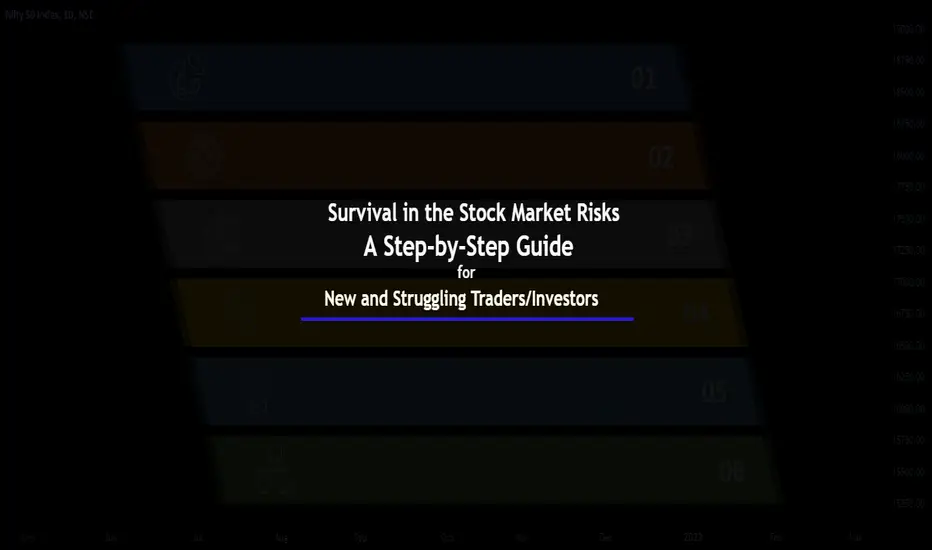The stock market can be an exciting and potentially lucrative place to invest, but it also carries significant risks, particularly in the futures and options segment. While the potential for high returns is a major draw, it is essential to understand the risks and take appropriate measures to manage them effectively.
Risks in Futures and Options Segment
Futures and options are derivative products that allow investors to buy or sell a particular asset at a specific price on a future date. This segment can be risky due to the potential for high leverage, meaning that a small investment can lead to significant losses or gains. Moreover, futures and options are often complex instruments that require a solid understanding of the underlying asset.
Risk Aspects in Investment
Investment in the stock market also carries inherent risks, such as market volatility, company-specific risk, and currency risk, among others. These risks can impact the overall performance of your portfolio in the long run.
Risk Aspects in Day Trading
In day trading, an instrument is bought and sold on the same day so as to make a quick profit. While day trading can be profitable, it also carries significant risks due to the high volatility and leverage involved. Day traders need to have a deep understanding of the market and should use technical analysis to make informed decisions.
Step-by-Step Guide for Surviving the Stock Market
1. Educate Yourself: The first step to surviving the stock market is to educate yourself about the risks involved, market trends, and investment strategies. You can attend seminars, read books, and consult with experienced investors or brokers.
2. Set Realistic Goals: Setting realistic financial goals based on your investment horizon, risk appetite, and financial situation is crucial. This not only helps in avoiding impulsive trading but also in staying focussed.
3. Diversify Your Investments: Diversifying your portfolio across different sectors, geographies, and asset classes can help mitigate risks and balance your returns.
4. Have a Disciplined Approach: Avoid chasing quick returns or taking unnecessary risks. Have a disciplined approach to investing, and stick to your investment plan.
5. Manage Your Risks: Use risk management tools such as stop-loss orders and limit orders to minimize losses. Moreover, one should always try to invest only that much money which one can afford to lose. Other than that there is always need to maintain a cash buffer for emergencies.
In conclusion, the stock market carries significant risks, especially in the futures and options segment. However, with a disciplined approach, a sound investment strategy, and effective risk management, new and struggling traders and investors can survive and thrive in the stock market.
Thanks for reading.
Risks in Futures and Options Segment
Futures and options are derivative products that allow investors to buy or sell a particular asset at a specific price on a future date. This segment can be risky due to the potential for high leverage, meaning that a small investment can lead to significant losses or gains. Moreover, futures and options are often complex instruments that require a solid understanding of the underlying asset.
Risk Aspects in Investment
Investment in the stock market also carries inherent risks, such as market volatility, company-specific risk, and currency risk, among others. These risks can impact the overall performance of your portfolio in the long run.
Risk Aspects in Day Trading
In day trading, an instrument is bought and sold on the same day so as to make a quick profit. While day trading can be profitable, it also carries significant risks due to the high volatility and leverage involved. Day traders need to have a deep understanding of the market and should use technical analysis to make informed decisions.
Step-by-Step Guide for Surviving the Stock Market
1. Educate Yourself: The first step to surviving the stock market is to educate yourself about the risks involved, market trends, and investment strategies. You can attend seminars, read books, and consult with experienced investors or brokers.
2. Set Realistic Goals: Setting realistic financial goals based on your investment horizon, risk appetite, and financial situation is crucial. This not only helps in avoiding impulsive trading but also in staying focussed.
3. Diversify Your Investments: Diversifying your portfolio across different sectors, geographies, and asset classes can help mitigate risks and balance your returns.
4. Have a Disciplined Approach: Avoid chasing quick returns or taking unnecessary risks. Have a disciplined approach to investing, and stick to your investment plan.
5. Manage Your Risks: Use risk management tools such as stop-loss orders and limit orders to minimize losses. Moreover, one should always try to invest only that much money which one can afford to lose. Other than that there is always need to maintain a cash buffer for emergencies.
In conclusion, the stock market carries significant risks, especially in the futures and options segment. However, with a disciplined approach, a sound investment strategy, and effective risk management, new and struggling traders and investors can survive and thrive in the stock market.
Thanks for reading.
JJ Singh
Trader/Investor
Moderator, TradingView
🚀Join t.me/jjsingh_2020 ,
A Free Education channel
🚀Tweet at twitter.com/JaySingh_2020
Trader/Investor
Moderator, TradingView
🚀Join t.me/jjsingh_2020 ,
A Free Education channel
🚀Tweet at twitter.com/JaySingh_2020
Disclaimer
The information and publications are not meant to be, and do not constitute, financial, investment, trading, or other types of advice or recommendations supplied or endorsed by TradingView. Read more in the Terms of Use.
JJ Singh
Trader/Investor
Moderator, TradingView
🚀Join t.me/jjsingh_2020 ,
A Free Education channel
🚀Tweet at twitter.com/JaySingh_2020
Trader/Investor
Moderator, TradingView
🚀Join t.me/jjsingh_2020 ,
A Free Education channel
🚀Tweet at twitter.com/JaySingh_2020
Disclaimer
The information and publications are not meant to be, and do not constitute, financial, investment, trading, or other types of advice or recommendations supplied or endorsed by TradingView. Read more in the Terms of Use.
